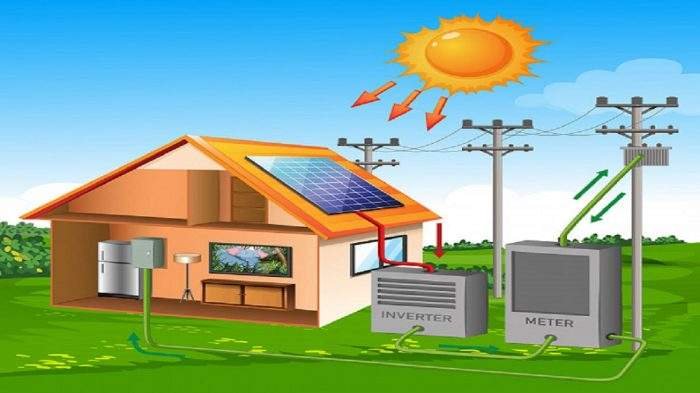4 Things to Know About a Solar Inverter Battery

Solar energy is recognized as one of the cleanest sources of electricity. If you’re interested in harnessing solar energy to generate electricity for your home, here are few things you will need. The solar panels are responsible for harnessing solar energy and converting it to electricity. The inverter distributes this electricity throughout your home. The battery is where the power is stored for later use. Let’s take a closer look at this solar inverter battery.
1. Choosing the right technology
Not all solar inverter batteries are the same. Batteries can be broadly classified as flat plate. Or they can be termed as tubular batteries based on the technology they use and their internal structure. Flat plate batteries are the older in terms of technology. These batteries are designed as a series of plates with the electrolyte pasted onto them. Tubular batteries use upgraded technology and feature a series of tubes. These contain the electrolyte within them.
This change in structure reduces the exposure for the electrolyte. It gives the batteries a longer lifespan. This also makes them faster to charge and slower to discharge. It also keeps the battery from giving out short bursts of power and instead releases power in a constant supply. Tubular batteries may be slightly more expensive as compared to flat plate batteries but the advantages they offer make the higher cost worth paying.
2. Picking the right sized battery
Batteries are available in a range of sizes. The price of a solar inverter battery is directly proportionate to its size. This means that the larger the size or capacity of the battery, the higher the price. This does not mean that the most expensive battery is best suited to your home’s needs. You need to be careful about the battery size you choose for your system.
If you choose a battery with a size lower than your needs, it will not be able to store sufficient power for your needs when the solar panels aren’t generating electricity. This may mean that when you really need power to put on lights and fans at night, you will be unable to do so. On the other hand, if you choose a battery with a capacity much higher than your needs, the battery will not fully discharge. This can affect the efficiency of the battery and shorten its lifespan.
Ideally, you need a deep cycle battery that can be discharged to a very low level and charges rapidly during the day. To calculate the ideal size of battery required here’s what you need to do:
- Calculate the total Watt-hours per day used by your appliances
- Divide the total by 0.85 to account for battery loss
- Divide the result by 0.6 to account for depth of discharge
- Next, divide the result by the nominal battery voltage
- Since, you may need the battery to power your home for more than a day, multiply the result with the number of days you need the battery to supply electricity.
3. Choosing the right manufacturer
Now that you know the size of battery required for your home, you need to pick the right manufacturer. Batteries are manufactured by local manufacturers as well as by recognized brands. Branded inverter batteries may be a little more expensive but they are worth the investment. Firstly, brands have a reputation to live up to. To ensure that their customers are satisfied and stay loyal to the brand, they will be more careful about their quality controls and use better materials.
On the other hand, local manufacturers are not as bothered about their customers becoming repeat customers and hence don’t pay as much attention to the quality of materials used.
Secondly, when you buy a branded inverter battery, you also get assured after sales service. If you need help installing the battery, the company will send someone over to your home. If you have maintenance related issues, they will again be able to help. When the battery efficiency lowers and it’s time to replace the battery, the company will offer you a good exchange rate. These are services not offered by local manufacturers.
4. Get the right battery
If you choose an off-grid solar power system, your system will be only as efficient as the battery it is connected to. In the case of a grid-connected system, you can use a battery to ensure that your power supply at night isn’t affected by power cuts and blackouts. This is also known as a hybrid system since it has the advantages of both a grid-connected and an off-grid system.
Hence, be careful about the battery you choose. To sum it up, you need a tubular battery from a well-established brand that has the capacity to meet your power requirements. A good solar inverter battery should last you at least a decade – that’s 10 years of clean electricity, minimal power bills and uninterrupted electricity at home.




